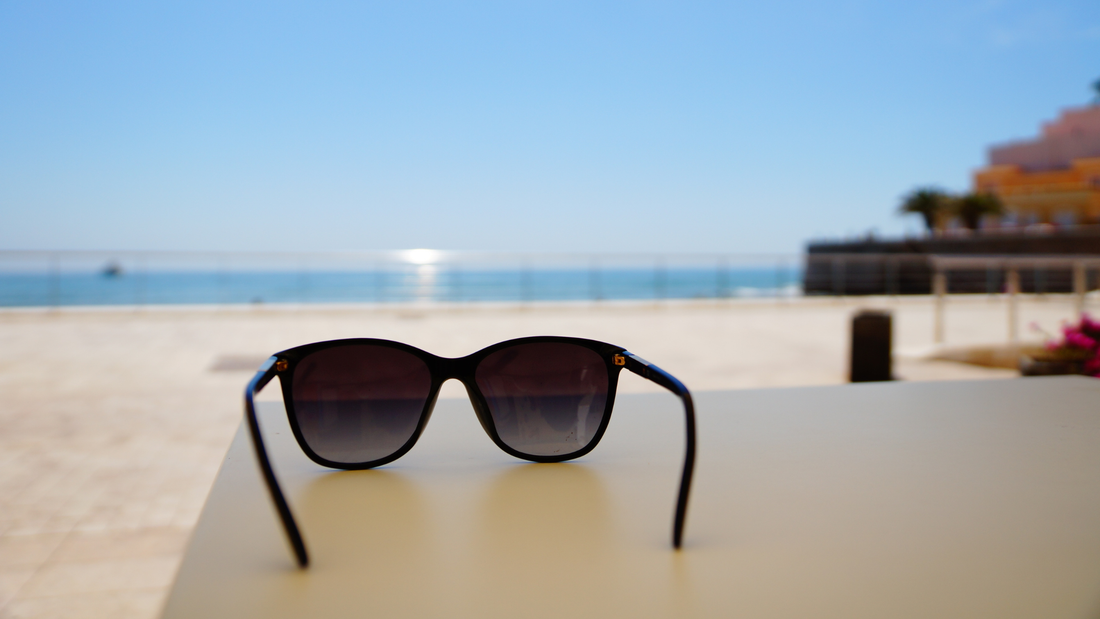
Blue Light vs. UV Rays: Different Types of Light and Their Impact on Eye Health
Share
In our modern digital era, we find ourselves constantly inundated with a multitude of light sources, each with potential effects on our eye health. Understanding the differences between blue light and ultraviolet (UV) rays is crucial for safeguarding our vision. Let's delve into these two types of light and their impact on our eyes.
Blue Light: What You Need to Know
Blue light emanates as high-energy visible (HEV) light emitted by electronic devices like smartphones, computers, and LED screens.
Although blue light plays a crucial role in regulating our sleep-wake cycle and enhancing daytime alertness, excessive exposure can result in digital eye strain and disturbances to our circadian rhythm.
Effects of Blue Light on Eye Health
Extended exposure to blue light may result in symptoms like eye fatigue, dryness, blurred vision, and headaches. Additionally, recent research indicates that prolonged exposure to blue light may heighten the risk of age-related macular degeneration (AMD), a primary cause of vision loss in adults.
Protecting Your Eyes from Blue Light
To mitigate the adverse impacts of blue light, contemplate implementing the following suggestions:
- Use blue light blocking glasses or computer glasses with anti-reflective coatings to filter out harmful blue light and minimize eye strain.
- Take regular breaks from screens by following the 20-20-20 rule: every 20 minutes, look at something 20 feet away for at least 20 seconds.
- Adjust your electronic devices' brightness and color temperature to warmer, less intense settings, especially during evening hours.
Understanding Ultraviolet (UV) Rays
UV rays are invisible rays of electromagnetic radiation emitted by the sun. Three types of UV rays exist: UVA, UVB, and UVC. While the Earth's atmosphere absorbs most UVC rays, UVA and UVB rays can penetrate the atmosphere and reach the surface.
Effects of UV Rays on Eye Health
Prolonged exposure to UV rays can lead to various eye conditions, including cataracts, photokeratitis (sunburn of the cornea), and pterygium (a growth on the eye's surface). Additionally, UV exposure is a significant risk factor for developing skin cancer around the eyelids and on the eye's surface.
Protecting Your Eyes from UV Rays
To shield your eyes from harmful UV rays, follow these recommendations:
- Wear sunglasses that provide 100% UV protection outdoors, even on cloudy days.
- Choose sunglasses with large frames or wrap-around styles to block UV rays from entering through the sides.
- Invest in prescription sunglasses or transition lenses that automatically adjust their tint based on UV exposure levels.
Conclusion
In conclusion, blue light and UV rays pose potential health risks to our eyes. By comprehending the distinct characteristics of these various light types and adopting proactive measures to safeguard our eyes, we can diminish the probability of encountering vision issues in the future.
Remember to prioritize your eye health by incorporating these protective measures into your daily routine. Whether working on a computer or enjoying outdoor activities, safeguarding your vision is essential for maintaining optimal eye health and overall well-being.
Daniel Walters Eyewear
Address: 19301 Ventura Blvd, Suite 203, Tarzana, CA 91356, United States of America
Phone: +1(855) 326-4359
Email: info@danielwalters.com
Explore our blue light blocking and UV protective sunglasses collection to keep your eyes safe and stylish. Visit www.danielwalters.com today!
